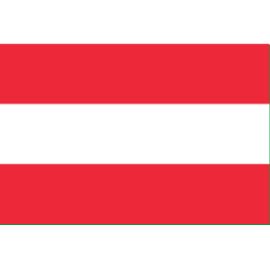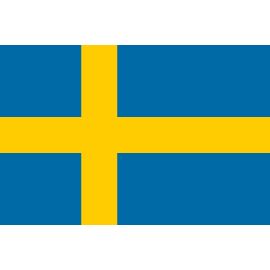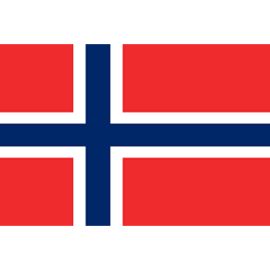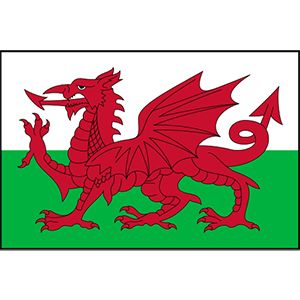Search results
- Regular Season
 GibraltarSep 10,2:45 pm GMT-04:00
GibraltarSep 10,2:45 pm GMT-04:00 Liechtenstein
LiechtensteinOther matches
Euro 2016 Qualifiers FT Nov 18 @ 
France L0 - 14Euro 2016 Qualifiers FT Nov 21 vs 
Netherlands L0 - 62:45 pm GMT-04:00 Oct 10 vs 
San Marino Group B GP W D L Pts 1  France
France8 7 1 0 22 2  Netherlands
Netherlands8 6 0 2 18 3  Greece
Greece8 4 1 3 13 4  Republic of Ireland
Republic of Ireland8 2 0 6 6 5  Gibraltar
Gibraltar8 0 0 8 0 Group C GP W D L Pts 1  England
England8 6 2 0 20 2  Italy
Italy8 4 2 2 14 3  Ukraine
Ukraine8 4 2 2 14 4  North-Macedonia
North-Macedonia8 2 2 4 8 5  Malta
Malta8 0 0 8 0 Group E GP W D L Pts 1  Albania
Albania8 4 3 1 15 2  Czech Republic
Czech Republic8 4 3 1 15 3  Poland
Poland8 3 2 3 11 4  Moldova
Moldova8 2 4 2 10 5  Faroe Islands
Faroe Islands8 0 2 6 2 Group F GP W D L Pts 1  Belgium
Belgium8 6 2 0 20 2  Austria
Austria8 6 1 1 19 3  Sweden
Sweden8 3 1 4 10 4  Azerbaijan
Azerbaijan8 2 1 5 7 5  Estonia
Estonia8 0 1 7 1 - Overview
- Land
- People
- Economy
Gibraltar is a British overseas territory just northeast of the Strait of Gibraltar. Since the 18th century, Gibraltar has been a symbol of British military strength, and it is commonly known as “the Rock.”
What is the source of freshwater in Gibraltar?
The area above Catalan and Sandy bays provided a rain-catchment area for Gibraltar. The water was stored in several tanks blasted into the Rock. The rainwater was then blended with water pumped from wells on the isthmus or distilled from the sea. A desalinization plant was installed in the 1980s.
Who captured Gibraltar for the British?
Sir George Rooke captured Gibraltar for the British during the War of the Spanish Succession, and Spain formally ceded it to Britain in 1713.
What kind of monkey is found on Gibraltar?
The peninsula consists of a limestone and shale ridge (the Rock), which rises abruptly from the isthmus to 1,380 feet (421 metres) at Rock Gun, its northernmost summit. Its highest point, 1,396 feet (426 metres), is attained near its southern end. The Rock shelves down to the sea at Great Europa Point, which faces Ceuta. From the Mediterranean Sea, Gibraltar appears as a series of sheer, inaccessible cliffs, fronting the sea on the peninsula’s east coast. The Rock’s slope is more gradual on its western side and is occupied by tier upon tier of houses that stretch for some 300 feet (90 metres) above the old defensive walls. Higher up, limestone cliffs almost isolate the Upper Rock, which is covered with a tangle of wild trees.
Gibraltar has no springs or rivers. An area of sand slopes above Catalan and Sandy bays has been sheeted over to provide a rain-catchment area, which was once the sole source of potable water for Gibraltar. The water was stored in a number of tanks blasted into the Rock. The rainwater was then blended with water pumped from wells on the isthmus or distilled from the sea. The catchment ceased to be used as a source of potable water in the 1990s, when a desalinization plant built in the 1980s was expanded, but it still is used as a service reservoir. Gibraltar has hot, humid, and almost rainless summers; mild winters during which there is usually adequate rain; and warm, moderately rainy, transitional seasons. The territory is subject to strong easterly winds.
There are more than 500 species of small flowering plants on Gibraltar. The Gibraltar candytuft is a flower native only to the Rock. Wild olive and pine trees grow on the Upper Rock. Mammals include rabbits, foxes, and Barbary macaques (often erroneously identified as apes). Barbary macaques have roamed the Rock for hundreds of years and are Europe’s only wild monkeys. Although free to wander, they are generally seen on the Upper Rock. The macaques were once protected by the British army in Gibraltar, and, according to legend, British dominion over the Rock will cease when these animals are no longer present; their protection is now the responsibility of the Gibraltar Ornithological and Natural History Society. Migratory birds are common, and Gibraltar is the home of the only specimens of Barbary partridge in Europe.
Exclusive academic rate for students! Save 67% on Britannica Premium.
About four-fifths of the population are Gibraltarians, which includes those born in Gibraltar before 1925 and their descendants, as well as the spouses of Gibraltarians. The remainder are resident aliens and the families of British military personnel. Most Gibraltarians are of mixed Genoese, British, Spanish, Maltese, and Portuguese descent. Moroccans and Indians predominate among the resident aliens.
About four-fifths of Gibraltarians are Roman Catholic. The Anglican bishopric also covers communities in southern Europe, mainly in Spain’s Costa del Sol. The small Jewish community is of Sephardic descent. English is the official language of government and education, though most Gibraltarians are bilingual in English and Spanish, and many speak an English dialect known as Yanito (Llanito), which is influenced by Spanish, Genoese, and Hebrew.
Because of lack of space on the peninsula, there is no agriculture. There is a small amount of light industry—tobacco, beverages, canning—but the main sources of income are the provisioning of ships and military personnel, tourism, and the re-export trade. Tourism was stimulated through the large-scale expansion of hotel and beach facilities and gambling casinos. The port facilities occupy most of the western shore and a portion of land reclaimed from the sea. Income taxes and customs duties produce most of Gibraltar’s revenue. The United Kingdom supplies a significant amount of development aid. Principal expenditures include social services, public works, and municipal services. Gibraltar joined the European Economic Community (later succeeded by the European Union [EU]) with the United Kingdom in 1973. The monetary unit is the Gibraltar pound.
Passenger and cargo vessels stop at Gibraltar’s port, and ferries cross daily to Tangier, Morocco. Gibraltar has an international airport, and regular flights link the territory to London, Tangier, and many other destinations. The peninsula has a road system and a system of tunnels within the Rock for vehicular traffic. A cable car ascends to the central summit of the ridge. As the United Kingdom is not party to the Schengen Agreement, the crossing between La Linea and Gibraltar is one of the few remaining controlled internal borders in western Europe.
Discover the best things to do, places to stay and events in Gibraltar, a sunny destination with rich heritage and culture. Explore the nature reserve, the cable car, the apes, the tunnels, the museums and more.
Dec 19, 2023 · Learn about the geography, history, and culture of Gibraltar, a British Overseas Territory at the southern tip of the Iberian Peninsula. See political, outline, and physical maps of Gibraltar and its landmarks, such as The Rock and the Europa Point Lighthouse.
The history of Gibraltar, a small peninsula on the southern Iberian coast near the entrance of the Mediterranean Sea, spans over 2,900 years. The peninsula has evolved from a place of reverence in ancient times into "one of the most densely fortified and fought-over places in Europe", [1] as one historian has put it.
People also ask
Why is Gibraltar called the rock?
Why should you visit Gibraltar?
Where is Gibraltar located?
Who are the Gibraltarians?
Gibraltar. Things to Do in Gibraltar, Europe - Gibraltar Attractions. Explore popular experiences. See what other travelers like to do, based on ratings and number of bookings. See All. Day Trips (33) Whale Watching (6) Points of Interest & Landmarks (17) Bus Tours (99) Walking Tours (28) Historic Sites (17) Ports of Call Tours (48)
Discover Gibraltar, a British territory with a rich history and culture, and a stunning natural landscape. Explore its attractions, activities, guidebooks and more with Lonely Planet.













































